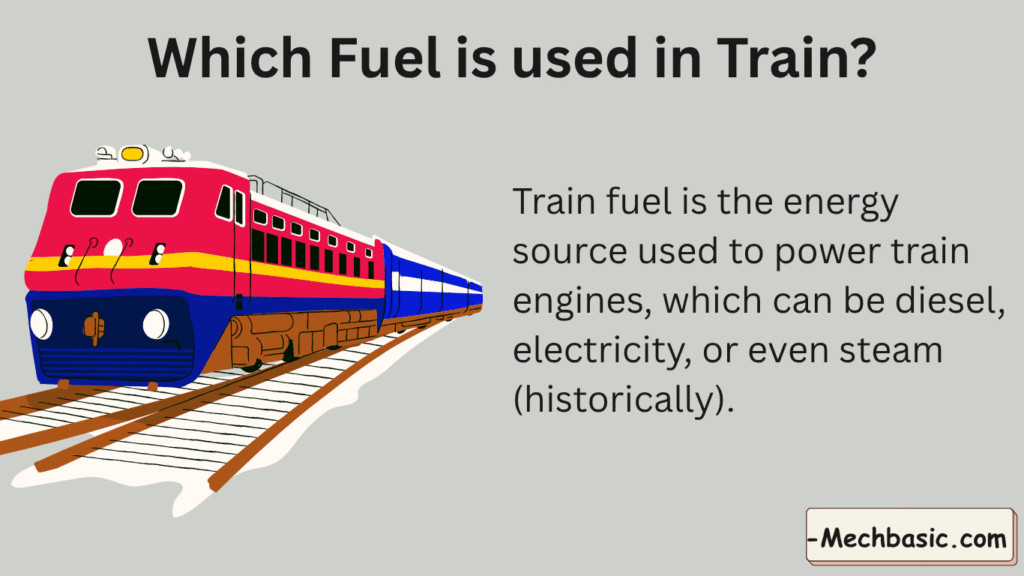Let’s go in detail about the fuels used in trains:

In this article:
1. Definition of Train Fuel
Train fuel is the energy source used to power train engines, which can be diesel, electricity, or even steam (historically).
- The type of fuel depends on the engine type: diesel locomotive, electric locomotive, or steam locomotive.
- Modern trains prioritize efficiency, reliability, and environmental compliance.
2. Types of Train Engines and Their Fuel
A. Diesel Locomotives
- Fuel Type: Diesel fuel (similar to automotive diesel, but often with higher cetane rating)
- Characteristics:
- High energy density for long-distance operation
- Stable combustion under heavy load
- Can operate without overhead electric lines (self-contained power source)
- Examples: Freight and passenger trains in non-electrified areas
- Special Notes:
- Some modern diesel locomotives use low-sulfur diesel to reduce emissions
B. Electric Locomotives
- Fuel Type: Electricity (drawn from overhead wires or third rail)
- Characteristics:
- Requires no onboard fuel storage
- Environmentally cleaner if electricity comes from renewable sources
- High efficiency and fast acceleration
- Examples: Many metro systems, high-speed trains like Shinkansen or TGV
C. Steam Locomotives (Historical)
- Fuel Type: Coal, wood, or oil
- Characteristics:
- Burned to heat water in the boiler, producing steam to drive pistons
- Largely obsolete due to inefficiency and pollution
D. Hybrid / Alternative Fuel Trains
- Fuel Type:
- Diesel-electric hybrids (diesel engine drives generator, powers electric motors)
- Emerging hydrogen fuel cell trains
- Examples: Alstom Coradia iLint (hydrogen train in Germany)
3. Key Properties of Train Fuel
| Property | Importance |
|---|---|
| High Energy Density | Needed to move heavy loads over long distances |
| Stable Combustion | Efficient operation under variable load conditions |
| Availability & Cost | Easily refueled along routes |
| Low Environmental Impact | Important for modern diesel trains and alternatives |
4. Summary of Train Fuel Types
| Train Type | Fuel Used | Notes |
|---|---|---|
| Diesel Locomotive | Diesel fuel | Common in non-electrified areas, high torque |
| Electric Locomotive | Electricity | Efficient, clean, requires infrastructure |
| Steam Locomotive | Coal / Wood / Oil | Historical, largely obsolete |
| Hybrid / Hydrogen | Diesel + Electric / Hydrogen | Emerging technologies for low-emission operation |
✅ Key Points
- Modern freight and passenger trains mostly use diesel or electricity.
- Diesel-electric locomotives dominate in areas without electrification.
- Hydrogen fuel cell trains are an emerging eco-friendly alternative.
- Fuel choice depends on infrastructure, efficiency, environmental regulations, and operational cost.
💡 Tip:
- In diesel-electric trains, diesel fuel powers a generator, which then drives electric motors, combining advantages of both diesel and electric power.
Other courses:



